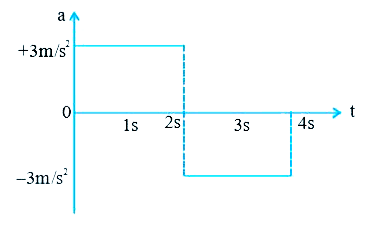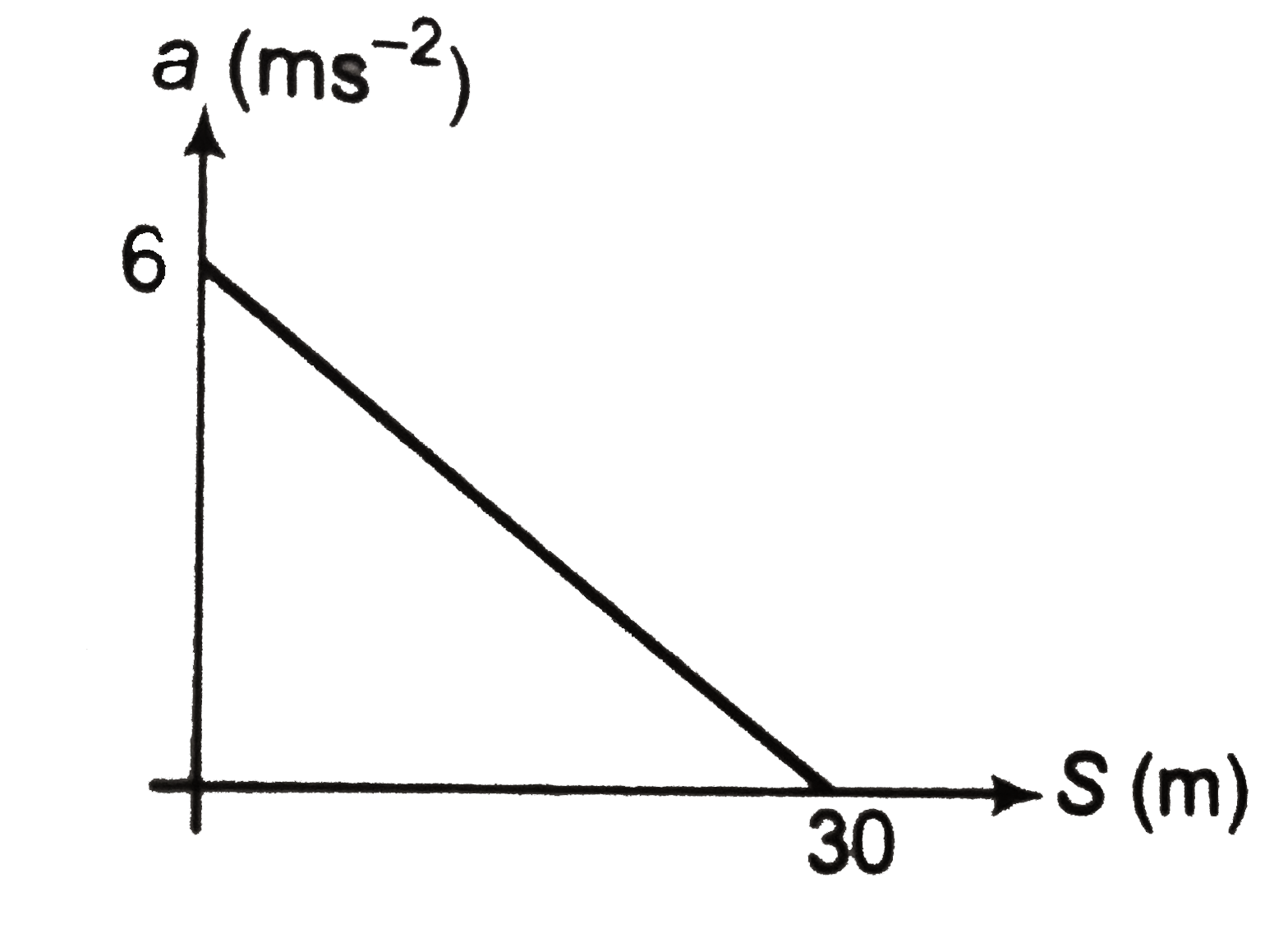The car start from rest at x=0 and is subjected to an acceleration shown by the a-s graph.Draw the v-s graph and determine the time needed to travel 60 m.

The correct Answer is:
Step by step video solution for The car start from rest at x=0 and is subjected to an acceleration shown by the a-s graph.Draw the v-s graph and determine the time needed to travel 60 m. by Physics experts to help you in doubts & scoring excellent marks in Class 11 exams.
Updated on:21/07/2023Similar Questions
Knowledge Check
A car starts from rest, attain a velocity of 36kmh−1 with an acceleration of 0.2ms−2, travels 9 km with this uniform velocity and then comes to halt with a uniform deaceleration of 0.1 ms−2. The total time of travel of the car is
A1050 sB1000 sC950 sD900 s
A particle starts from rest at t=0 and undergoes an acceleration as shown in figure.
Draw the velocity-time graph of the motion of the particle during the interval from zero to 4 second.

View SolutionStarting from rest at s=0,a boat travels in a straight line with an acceleration on as shown by the a-s graph. Determine the boat's speed at s=40,90 .

View SolutionA particle starting from rest moves in a straight line with acceleration as shown in the a-t graph. Find the distance (in m) travelled by the particle in the first four seconds from start of its motion.
Q
View SolutionThe v-s graph describing the motion of a motorcycle is shown in figure. Construct the a-s graph of the motion and determine the time needed for the motorcycle to reach the position s=120m. Given In 5=1.6.

View SolutionA particle starts from rest and accelerates as shown in the graph .Determine (a)the particle's speed at t=10 s and t=20 s and (b)the distance travelled in the first 20 s.

View SolutionA car begains from rest at time t=0, and then acceleration along a straight track during the interval 0<t≤2s and thereafter with constant velocity as shown in figure in the graph. A coin is initially at rest on the floor of the car. At t=1s, the coin begains to slip and its stops slipping at t=3s . The coefficient of static friction between the floor and the coin is (g=10m/s2)

View SolutionAt t=0, a particle starts from reat and moves along a straight line, whose acceleration-time graph is shown in .
 .
.
Convert this graph into velocity-time, From the velocity-time graph, find the maximum velocity attained by the particle. Also find from v−t graph, the sisplacement and distance travelled by the particle from 2 to 6s,
View Solution


